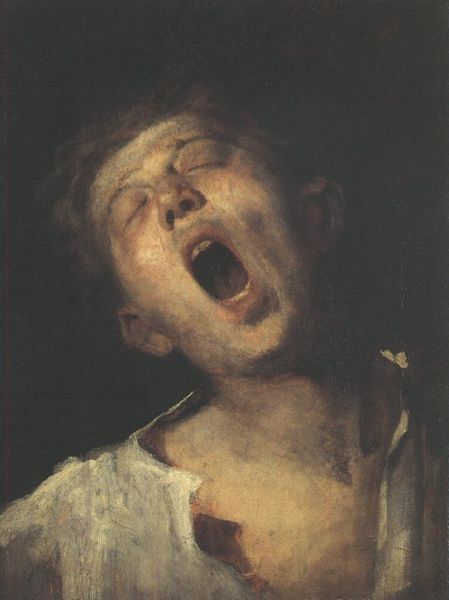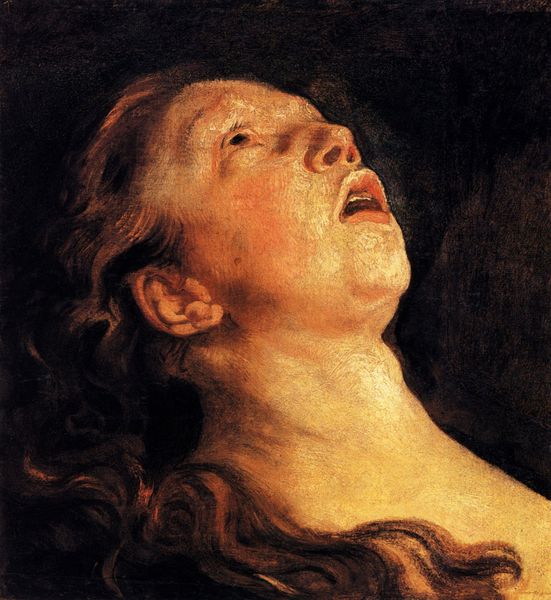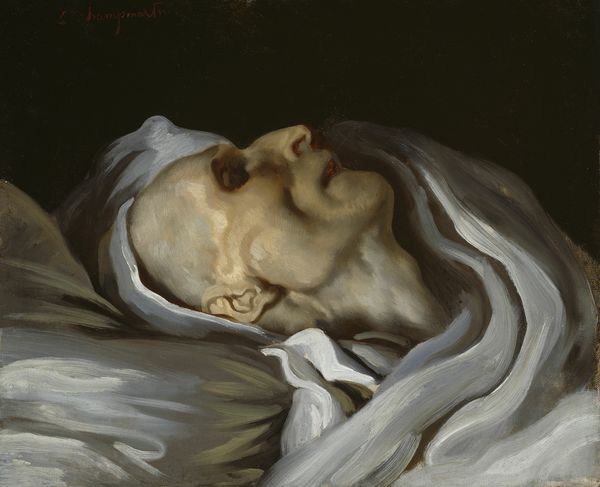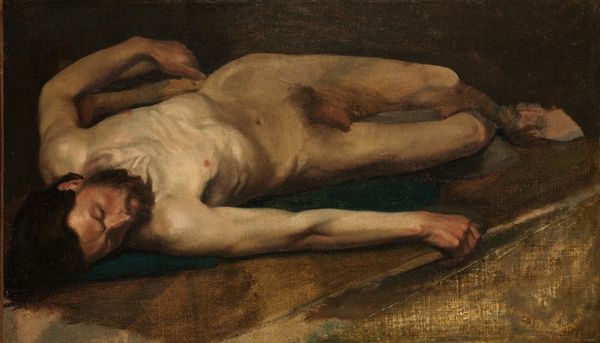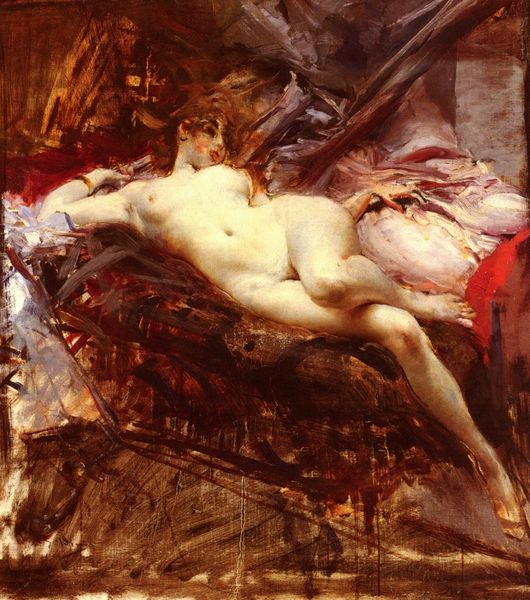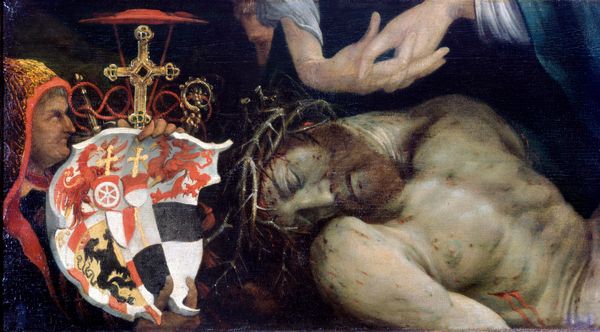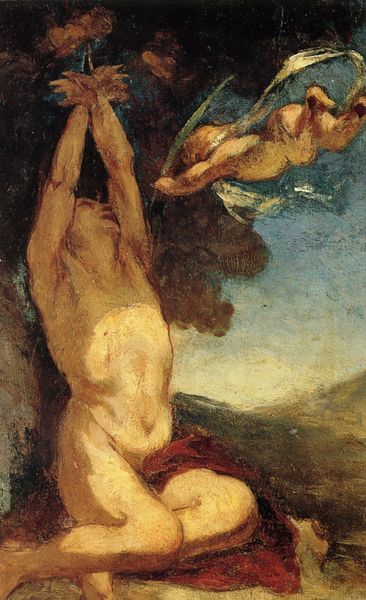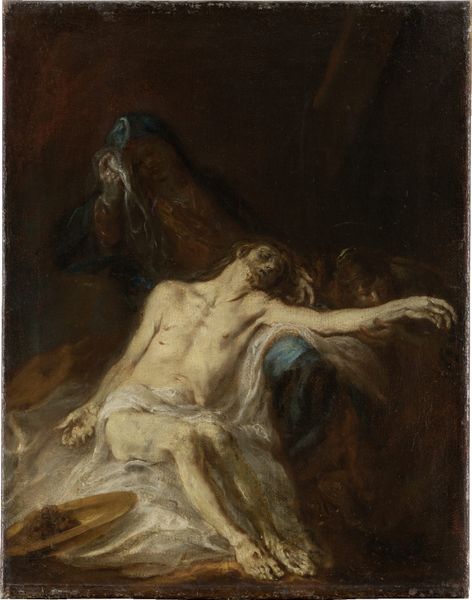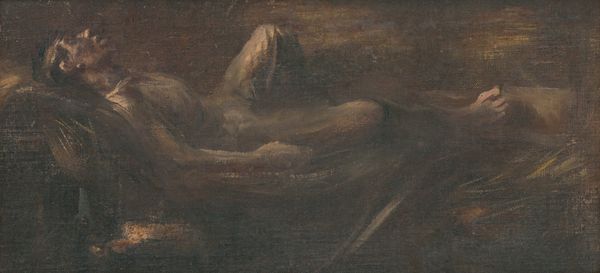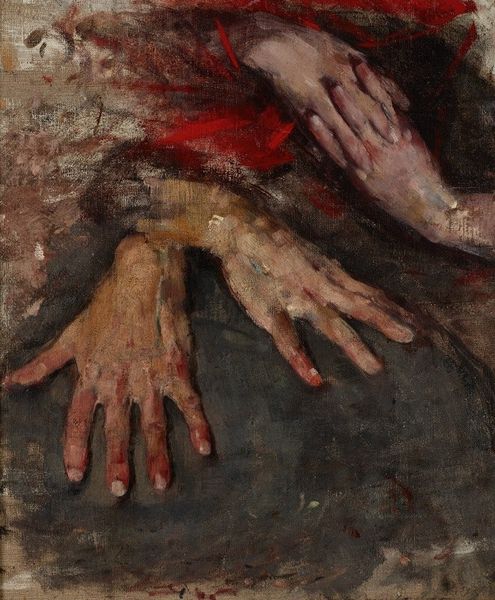
oil-paint
#
portrait
#
oil-paint
#
oil painting
#
romanticism
#
chiaroscuro
#
history-painting
#
academic-art
Copyright: Public domain
Editor: We're looking at Théodore Géricault's "Head of a Dead Young Man," an oil painting. The dark shadows and stark lighting create a really unsettling atmosphere. What do you see in this piece, focusing on its formal elements? Curator: Formally, the chiaroscuro is striking. Notice how the dramatic contrast between light and dark sculpts the form, almost dissecting it visually. The brushstrokes are loose and gestural, adding to the raw emotional intensity. Consider the implications of this aesthetic fragmentation. Editor: It’s interesting that you say "fragmentation." How do the shapes of the face impact my experience of the art? Curator: Precisely. Observe the strong diagonal of the composition, the tension between the light areas of the face and the impenetrable darkness. How do these formal oppositions, light/dark and diagonal/horizontal, generate the feeling of unease or pathos in the viewer? Is it something almost mathematical? Editor: So, by isolating these elements like line, form, and the relationship of light and shadow, you see the painting not just as a representation of death, but as a carefully constructed composition of forms evoking emotion? Curator: Exactly. Consider how the artist manipulates our perception through purely visual means. Disregarding any symbolism or social significance, we can concentrate on the structural harmony—or disharmony—created by Géricault's use of painterly elements. Do you see how our interpretation is modified via visual tension? Editor: That’s a very different approach than what I usually think about. Now I am seeing an intention through formal arrangement that goes beyond just painting the subject matter realistically. Curator: Indeed, understanding the formal devices helps unlock a new understanding of the image.
Comments
No comments
Be the first to comment and join the conversation on the ultimate creative platform.
